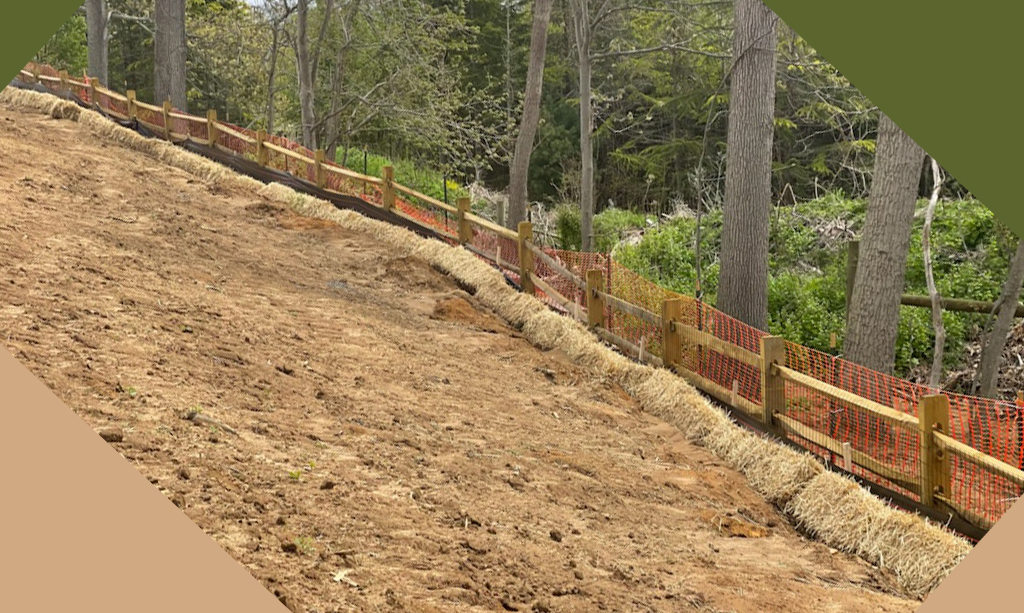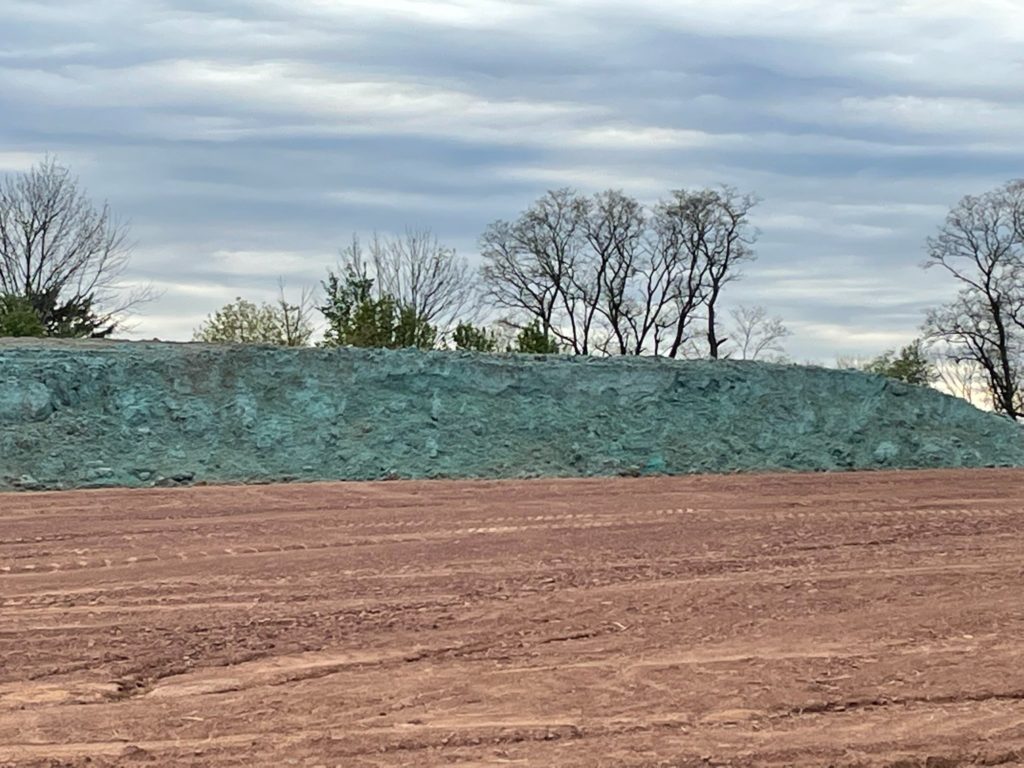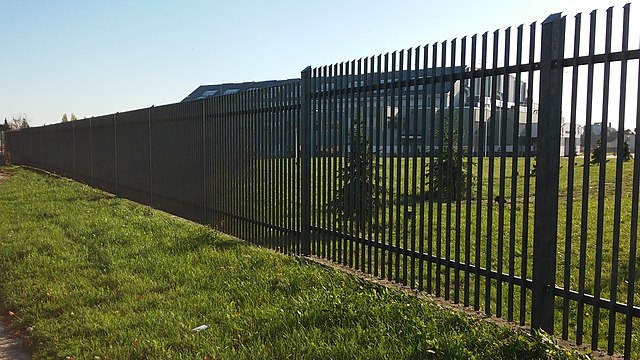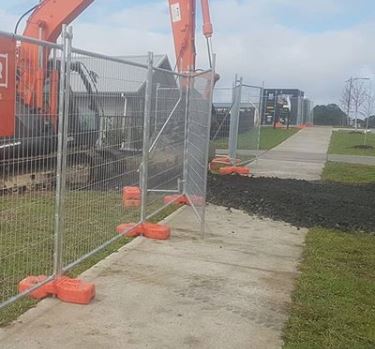If you’re a construction business owner in Ocean County and Monmouth County New Jersey, then you know that having an SWPPP is essential. But what is a Stormwater Pollution Prevention Plan? Simply put, it’s a document that outlines how you will protect the environment from and minimize stormwater pollution. Stormwater runoff is one of the leading sources of water pollution in the United States, so it’s important to take steps to prevent it from happening at your construction site. In this blog post, we will discuss why you need an SWPPP and what goes into creating one.
What is SWPPP and Why is it Important?
Stormwater Pollution Prevention Plans are developed by contractors to mitigate the impacts of stormwater runoff from construction sites. Stormwater runoff is any water that flows off of a site during precipitation events. This can include rain, snowmelt, and even irrigation water. As this water flows over the ground, it picks up pollutants like sediment, nutrients, chemicals, and debris.

When stormwater drains away from a surface, it accumulates debris, sediments, chemicals, and more as it flows over land and impervious surfaces. If left unchecked, these pollutants can end up in our waterways, where they can degrade water quality and harm aquatic life. Stormwater runoff is also a leading cause of flooding.
In order to prevent pollution and reduce the risk of flooding, the EPA requires that all construction sites create and implement a Stormwater Pollution Prevention Plan. SWPPPs must be designed specifically for each project, taking into account the size and location of the site, as well as the type of construction that will be taking place. The goal of an SWPPP is to prevent pollution by controlling stormwater runoff from the site.
Federal Government’s Role in Stormwater Pollution Prevention
The Federal government has been working to address water pollution for many years. In 1987, the EPA released the first version of its Construction General Permit (CGP), which establishes national standards for the control of stormwater runoff from construction sites. The CGP is updated every five years, with the most recent version being released in 2017. The CGP expires five years after its original publication date and is currently scheduled to expire on February 16, 2022. This article discusses What is a retention pond and why is maintenance important?
The NOI and SWPPP
The first step in creating a Stormwater Pollution Prevention Plan is to submit a Notice of Intent (NOI) to the EPA. The NOI is a document that provides information about your construction project, including the location of the site, the size of the project, and the type of construction phase that will be taking place. The NOI is used to determine whether or not your project will need to obtain a Stormwater Pollution Prevention Plan.
After the EPA reviews your NOI, they will either approve it or require you to submit a Stormwater Pollution Prevention Plan. If your project is approved, you will receive a Notice of Coverage (NOC). The NOC is a document that states that your project is covered under the EPA’s Construction General Permit. If you are required to submit a Stormwater Pollution Prevention Plan, you will need to prepare one and submit it to the EPA for review. This article details everything you should know about Construction Sitework.
State Stormwater Permits Programs
In addition to the EPA’s Construction General Permit, many states have their own inspection forms and stormwater permitting programs for construction sites. These state regulations are typically more restrictive than the EPA’s program and may require additional controls to protect water quality. Some states also have laws that require builders to obtain a Stormwater Pollution Prevention Plan before they can obtain a building permit.
If you are planning to build in a state that has its own stormwater permitting program, you will need to comply with the requirements of that program. For more information, you can contact your state’s environmental agency or the EPA’s Stormwater Hotline at (800) 424-7827. This is a great article to learn more about Wetlands Landscaping Ideas for Commercial Properties in New Jersey.
Local Agency Water Pollution Prevention Plan
State and local requirements are not always the same. Most towns and counties will have stricter local requirements for stormwater discharges, compared with federal and state permits. Getting state permits is required to start the construction activities, but local jurisdictions may face challenges if they need additional permits. A project’s civil engineer will be your best source of knowledge for your local needs.
It’s important to note that even if you are not required to obtain a Stormwater Pollution Prevention Plan, you may still be required by local agencies to take measures to control storm water discharges from your site. Check with your local building department or environmental agency to see what requirements apply to your project. This is a great post if you’re looking for information about Do You Need a Portable Temporary Fence for Your Construction Site?
Who Needs an SWPPP Permit?

The Stormwater Pollution Prevention Plan is required for all construction projects that will disturb one or more acres of land. If your project will disturb less than one acre of developed or undeveloped land, you may still be required to submit a Stormwater Pollution Prevention Plan if your project is located in a designated “sensitive area.” Sensitive areas include wetlands, streams, lakes, and floodplains.
If you are not sure whether or not your project is located in a sensitive area, you can contact your local building department or environmental agency for more information.
Purpose of SWPPP
The Stormwater Pollution Prevention Plan is a document that describes the measures you will take to control stormwater runoff from your construction site. The Stormwater Pollution Prevention Plan must be prepared before you begin construction and must be approved by the EPA.
Read about What is Soil Stabilization in Road Construction in this post.
The Stormwater Pollution Prevention Plan is designed to protect water quality by preventing pollution from being discharged into stormwater, rivers, lakes, and other water bodies. The Stormwater Pollution Prevention Plan also helps to prevent flooding by controlling the amount of stormwater runoff from your construction site.
What Should be Included in an SWPPP?
Your Stormwater Pollution Prevention Plan should include a description of the measures you will take to control stormwater runoff from your construction site. The Stormwater Pollution Prevention Plan should also include a description of the procedures you will use to monitor stormwater runoff from your construction site.
The Stormwater Pollution Prevention Plan should be prepared by a qualified professional, such as a civil engineer or environmental consultant. The Stormwater Pollution Prevention Plan must be approved by the EPA before construction can begin. Here is a great article about How to Estimate Sitework and Site Work Costs.
Who is Responsible for SWPPP Under Construction General Permits?
The construction owner may legally develop and implement an SWPPP. A construction company may have any of three responsibilities as its operator in this situation: If the pieces are contested by different groups they may require submitting a request for co-authority. The owner and general contractor usually share responsibility.
It is important to note that even if you are not required to obtain a Stormwater Pollution Prevention Plan, you may still be required to take measures to control stormwater runoff from your site. Check with your local building department or environmental agency to see what requirements apply to your project.
SWPPP requirement of the Environmental Protection Agency?
The Stormwater Pollution Prevention Plan is required for all construction projects that will disturb one or more acres of land. If your project will disturb less than one acre of land, you may still be required to submit a Stormwater Pollution Prevention Plan if your project is located in a designated “sensitive area.” Sensitive areas include wetlands, streams, lakes, and floodplains.
If you are not sure whether or not your project is located in a sensitive area, you can contact your local building department or environmental agency for more information.
EPA guidance for developing an SWPPP can be found HERE.
Is There a Deadline for SWPPP?
Yes. The Stormwater Pollution Prevention Plan must be prepared before you begin construction and must be approved by the EPA.
Different kinds of activities have differing time frames, although generally the NOI must be submitted before work commences.
Who Can Create the SWPPP?
The Stormwater Pollution Prevention Plan must be prepared by a qualified professional, such as a civil engineer or environmental consultant. Eastcoast Site Work is experienced in creating compliant SWPPPs for construction projects in New Jersey. The Stormwater Pollution Prevention Plan must be approved by the EPA before construction can begin.
In other states, the SWPPP must also be written by a qualified person. Please check the certification.
Final Thoughts
A Stormwater Pollution Prevention Plan is a document that describes the measures you will take to control stormwater runoff from your construction site. The Stormwater Pollution Prevention Plan must be prepared before you begin construction and must be approved by the EPA.
The Stormwater Pollution Prevention Plan is designed to protect water quality by preventing pollution from being discharged into stormwater, rivers, lakes, and other water bodies. The Stormwater Pollution Prevention Plan also helps to prevent flooding by controlling the amount of water runoff from your construction site.
You can learn more about Stormwater Pollution Prevention Plans by contacting your local building department or environmental agency. You can also find more information on the EPA’s website.
If you have any questions, please feel free to contact us. We would be happy to help you develop a Stormwater Pollution Prevention Plan for your construction project.
Frequently Asked Questions
What are the best ways to reduce stormwater pollution?
The best management practices for Stormwater Pollution Prevention Plans vary depending on the type of construction project. However, some common best management practices for sediment control include installing sediment or silt fence, controlling vehicle traffic, and soil erosion control.
Is concrete waste management important?
Yes, concrete waste management is important for many reasons. Stormwater surface runoff from construction sites can contain pollutants such as oil, grease, and heavy metals. Concrete waste management helps to prevent these pollutants from being discharged into stormwater and other water bodies.
What is the California Green Building Code?
The California Green Building Code (CALGreen) is a statewide building code that requires the use of Stormwater Pollution Prevention Plans for all construction projects that will disturb one or more acres of land. The CALGreen code is designed to reduce the environmental impact of construction projects.
What is a pollutant discharge elimination system?
A pollutant discharge elimination system is a system that is designed to remove pollutants from stormwater before it is discharged into rivers, lakes, and other water bodies. Pollutant discharge elimination systems can include sedimentation basins, retention ponds, and wetland systems.



